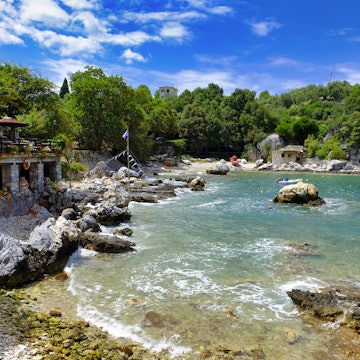
Overview
Central Greece holds three utterly unmissable destinations. To the ancient Greeks, Delphi, the most visited, was the centre or 'navel' of the earth. It remains as magical as ever, with its superb archaeological site and magnificent scenery. The Meteora region, at the northwestern edge of the plain of Thessaly, is similarly breathtaking, with towering rocky outcrops topped by teetering monasteries (and rock climbers). And the beautiful Pelion Peninsula, beside the Aegean to the east, is criss-crossed with cobblestone paths that link lush mountain hamlets with beaches to rival the finest islands.
Leave the planning to a local expert
Experience the real Central Greece. Let a local expert handle the planning for you.
Must-see attractions
Get a book. Get inspired. Get exploring.
in partnership with getyourguide



















